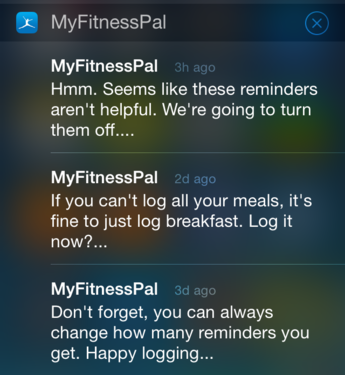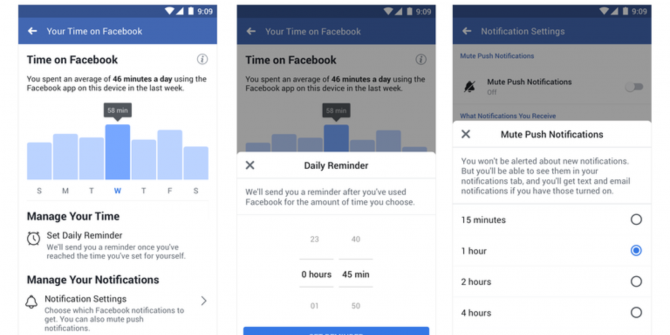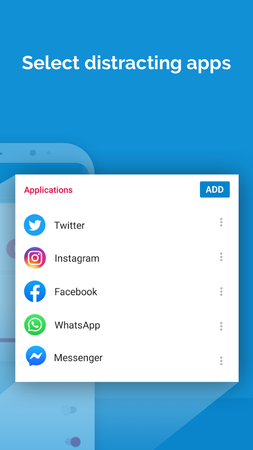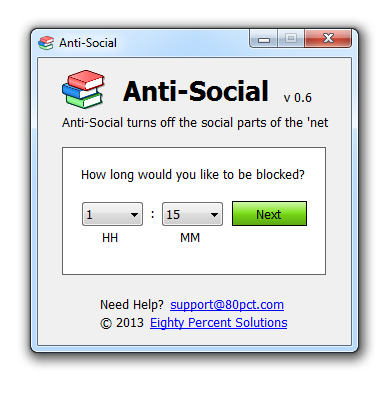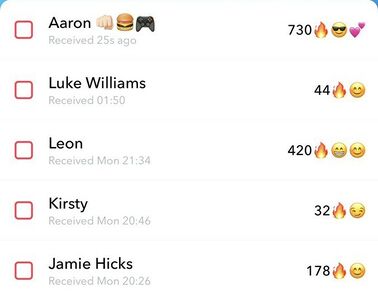User:Rita Graca/gradproject/prototyping/itches: Difference between revisions
Rita Graca (talk | contribs) No edit summary |
Rita Graca (talk | contribs) |
||
| Line 50: | Line 50: | ||
A bunch of projects work with the "ability" part, allowing the user to block certain apps for a period of time, or restricting the time you spend on these. e.g. Freedom, StayFocusd, WasteNoTime, Offtime, AppBlock, Anti-Social. | A bunch of projects work with the "ability" part, allowing the user to block certain apps for a period of time, or restricting the time you spend on these. e.g. Freedom, StayFocusd, WasteNoTime, Offtime, AppBlock, Anti-Social. | ||
Some operating systems have included screen time management as features, TikTok and Instagram did it in 2019. | Some operating systems have included screen time management as features, and platforms such as TikTok and Instagram did it in 2019. | ||
</div> | </div> | ||
| Line 61: | Line 61: | ||
<div style='max-width: 50%;'> | <div style='max-width: 50%;'> | ||
====------> MOTIVATION==== | ====------> MOTIVATION==== | ||
Latest revision as of 16:44, 12 November 2019
Itches
------> PROMPT
- notifications
- alarms
- triggers
- lights
- spaces (kitchen=hungry)
- vibrations
- images
- sounds
- ...
A habit can form and then a strong trigger is not needed anymore.
After a while without using your phone, you suddenly realise you have not checked it for a while. Maybe someone called, emailed, ping you. This is a habit that happens without triggers, a thought that seems to come from the vacuum, out of nowhere. A successful behaviour change happened in most of us, and we went through several steps until we reached this state. But triggers are everywhere, just in case we forget.
Low-tech solution?
Script to clean notifications. This may make you more anxious, it doesn't help.
Market solution?
Triggers are something the user has been getting more control such as personalising what kind of notifications they wish to receive.
------> ABILITY
Access to a computer, internet, time, etc. To make the action easy, features such as add to your card and pay later, swipe up to go to the site, store feature on Instagram.
Low-tech solution?
Temper with the ability to use the phone, such as lock the phone for several hours. What if you need the phone? It doesn't help.
Market solution?
A bunch of projects work with the "ability" part, allowing the user to block certain apps for a period of time, or restricting the time you spend on these. e.g. Freedom, StayFocusd, WasteNoTime, Offtime, AppBlock, Anti-Social.
Some operating systems have included screen time management as features, and platforms such as TikTok and Instagram did it in 2019.
------> MOTIVATION
Three core motivators exist: Sensation (pleasure/pain), Anticipation (hope/fear), and Belonging (acceptance/rejection). It is possible to boost motivation through badges, titles, money, ...
In social media, the biggest motivator for me is fear of missing out on friends, on jokes, on news, on life. Especially now, while studying abroad, I fear missing out in my home culture. Is in the motivation that is harder to work in, because they appeal to very strong basic emotions. What can I do then?
Even when companies adjust their products to include more user involvement in the personalisation of triggers and their ability, the motivation becomes untouched and as strong. To ignore emotions such as pleasure, pain or fear of rejection seems impossible.
Snapchat rewards longer streaks with special emojis, such as the "100" emoji for streaks lasting 100 days, or a mountain emoji for an extremely long streak.” “A Snapchat streak is when you send direct snaps back and forth with a friend for several consecutive days. The longer you go without breaking the chain of communication, the longer your streak is.

